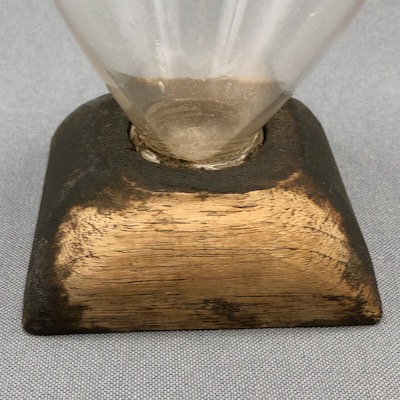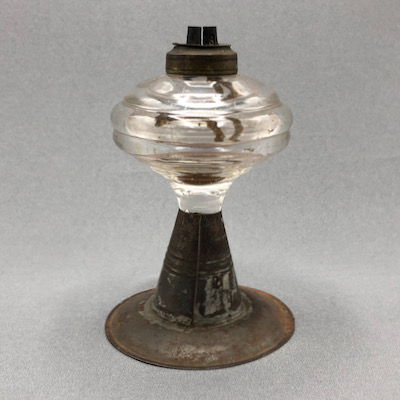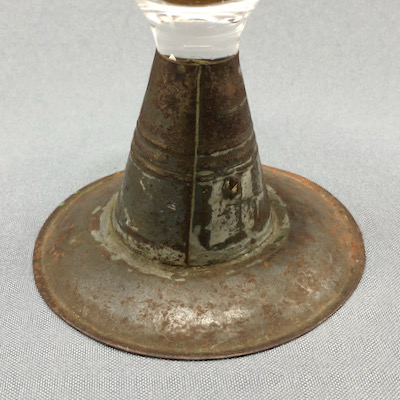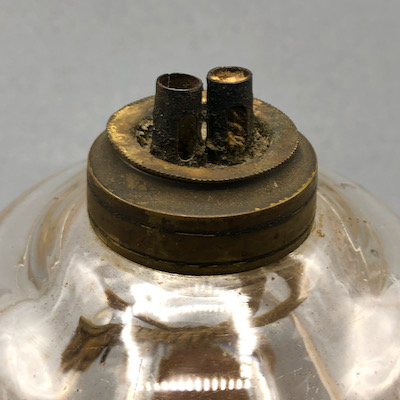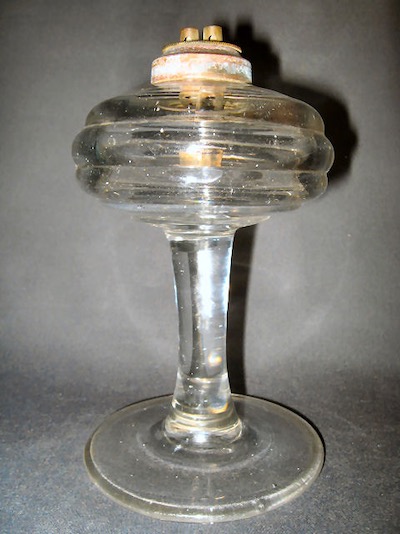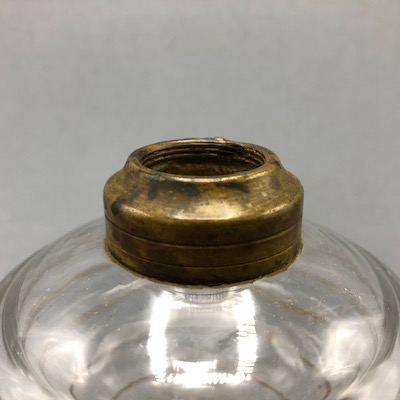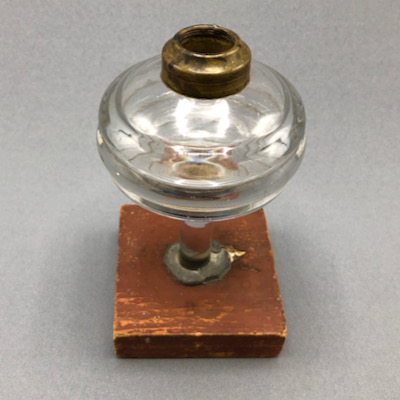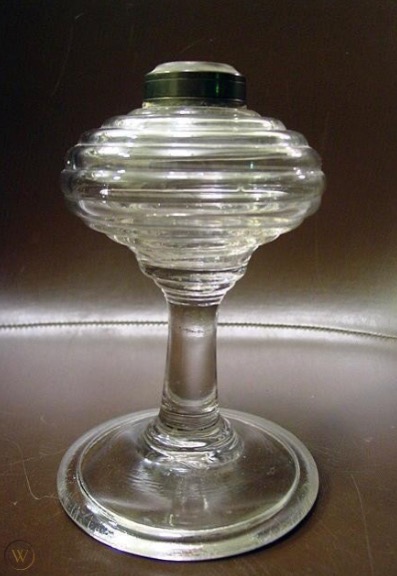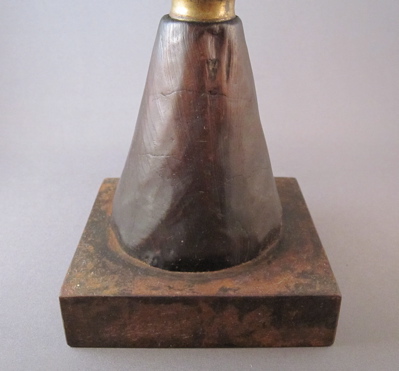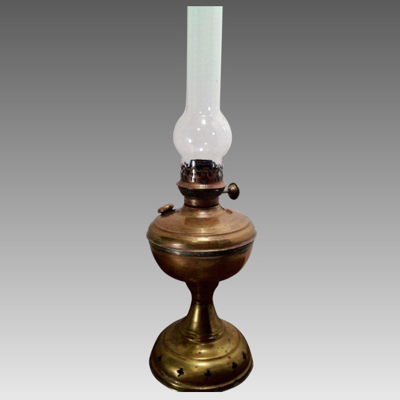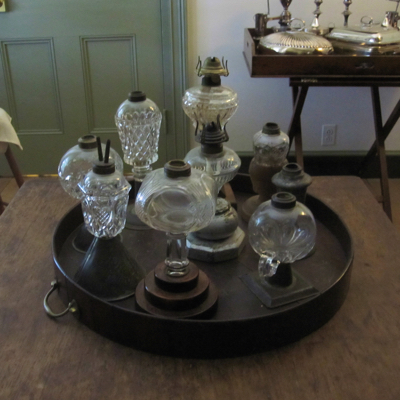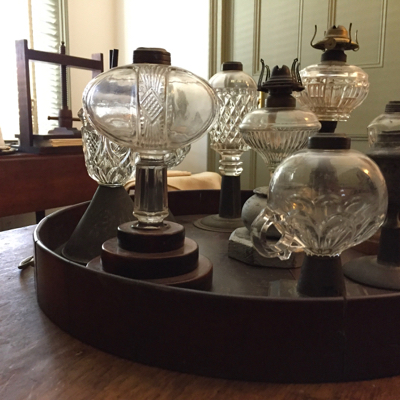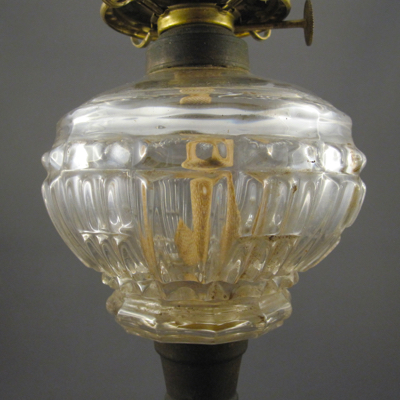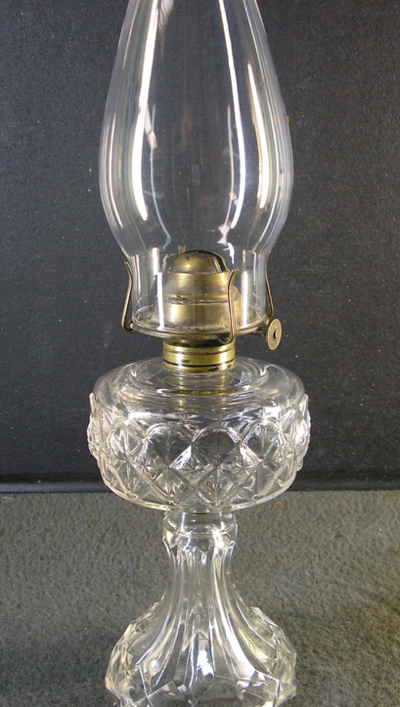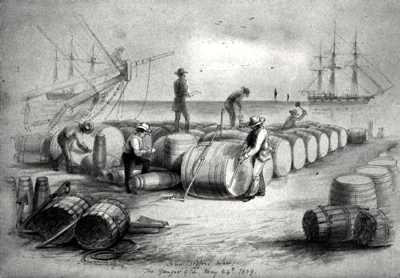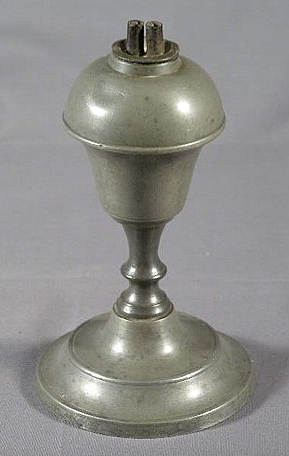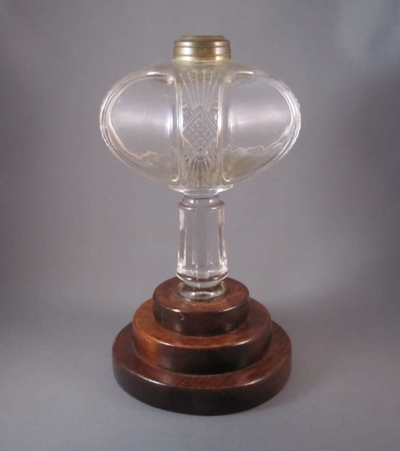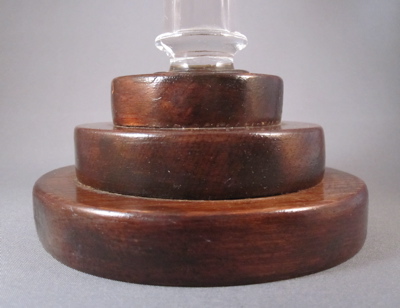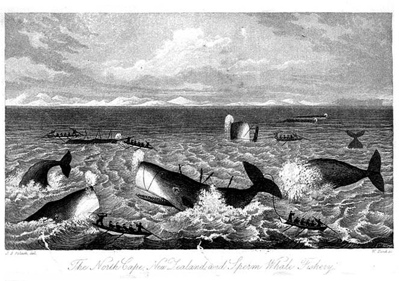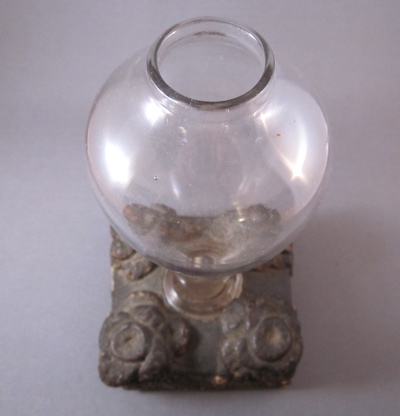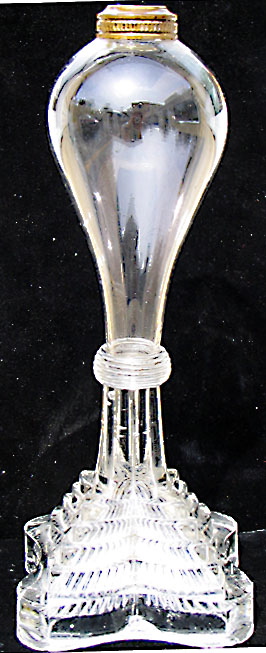This EAPG (Early American Pattern Glass) flint glass oil lamp with the Sweetheart pattern was made in America at the Boston & Sandwich Glass Co., Boston, Massachusetts, in the mid 1800s. It stands 8.5 inches high.
As oil lamps were used daily throughout the house for centuries, it’s not surprising that they are one of the most common types of inventive repair. Since I started collecting make-do’s, I have come across a variety of clever repairs in wood, metal and glass. This lamp sports a straightforward 4 inch square wood replacement base with inlaid trim, most likely done at home. I have many unique glass oil lamps in my collection so please enter GLASS OIL LAMP in the search bar if you want to see more examples.
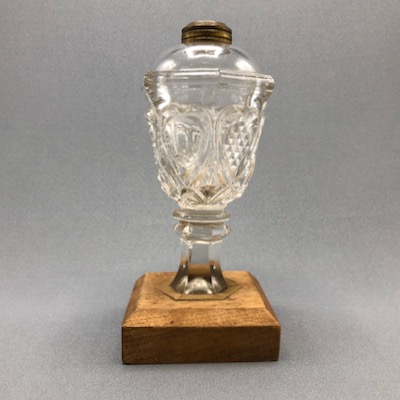

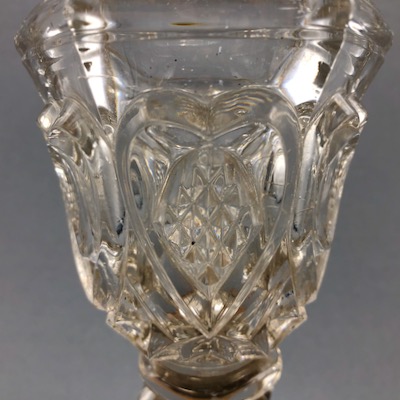
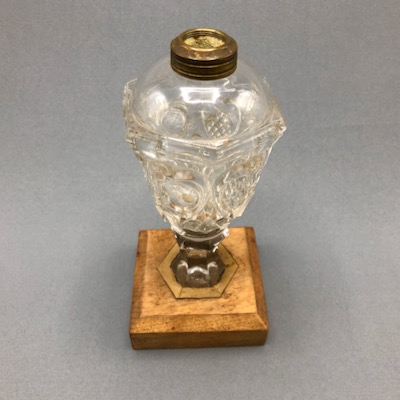

This intact example suggests what the original base on my lamp might have looked like before ol’ butterfingers let it slip.

Photo courtesy of eBay

